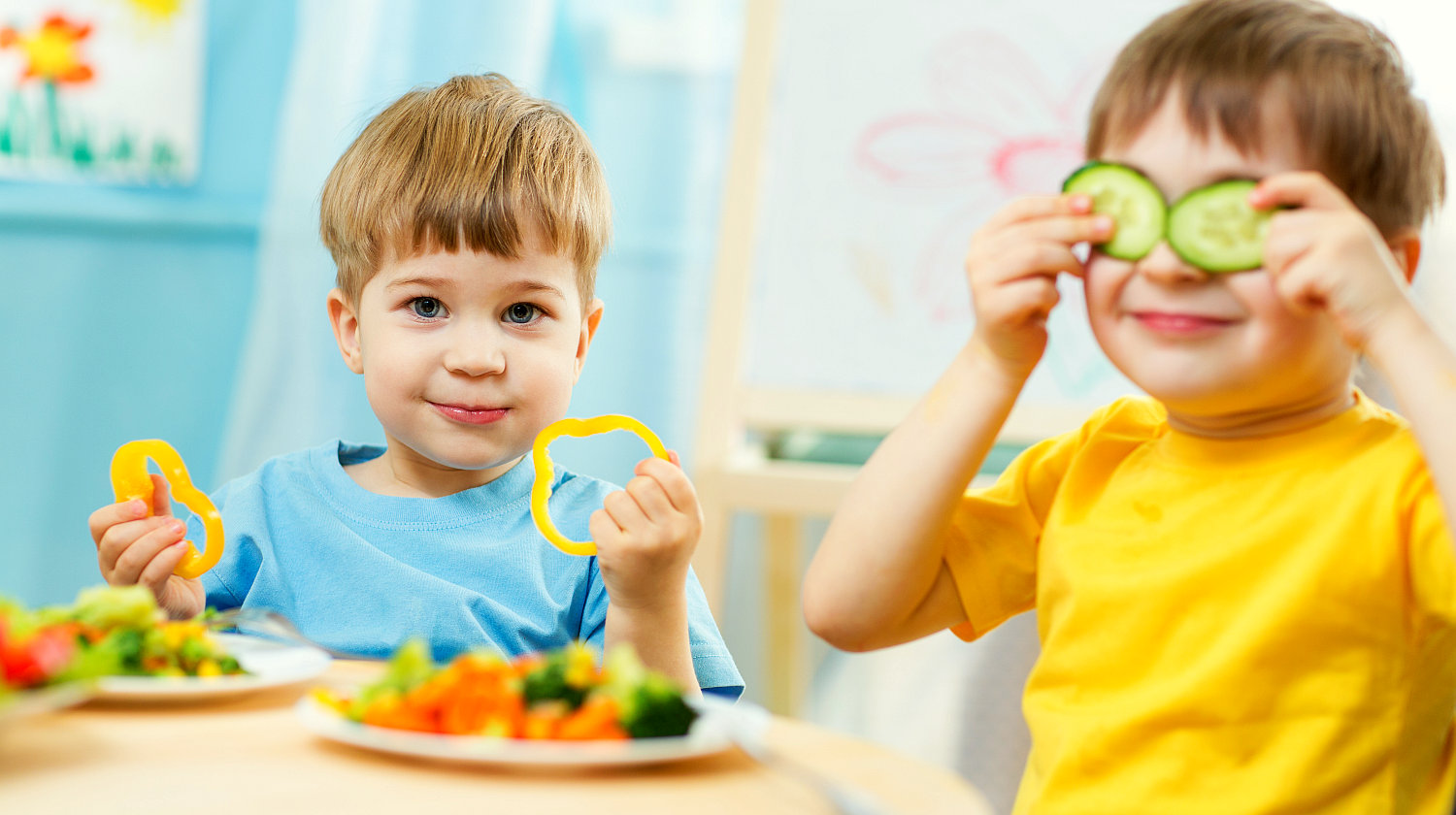Eating healthy benefits kids (and adults) physically, psychologically, and mentally. Here are a few ways to help your kids make healthy food choices.
RELATED: Hey Kids…You May Want to Put Down That Fruit Juice and Drink from a Water Ionizer Now
In this article:
- Rethink Breakfast
- Don’t Ban Junk Food
- Prepare Meals Together
- Bring in the Dips and Sauces
- Fry It Up
- Freeze It
- Turn Food into Art
- Be Flexible
- Get Active
Healthy Eating Tips for Kids and Parents
1. Rethink Breakfast
There’s no law limiting breakfast to cereal and milk or pancakes and sausage. In fact, many traditional breakfast staples are high in refined sugars, a leading contributor to obesity.
Refined Sugar Definition: Sugar that has undergone multiple chemical processes to extract only the sugar content and leave out the impurities and nutritional contents.
Finding the right nutrition balance is key.
Experiment with dinner for breakfast. Heat up some leftovers.
Toss some vegetables in with the scrambled eggs and bacon. Mix things up to keep your kids interested and teach them to enjoy a variety of foods.
2. Don’t Ban Junk Food
Burgers, fries, chips, and ice cream are just some of the guilty pleasures health-conscious parents try to keep their kids away from. But, regarding junk food as pure evil may actually lead to a negative outcome.
Kids and even adults are drawn to the forbidden and will find ways to eat junk food when their parents aren’t watching. Taking your kids out for a pizza or ice cream once in a while can help curb their cravings and limit their overall consumption of sugary, fatty foods.
As long as you lead by example and stay consistent with healthy eating habits, you’ll keep your kids on the right track.
3. Prepare Meals Together
Preparing meals together is a great way to get kids interested in food and become more mindful of what they eat.
It can be as simple as building a sandwich or as fun as planning and cooking dinner for the whole family. Even preschoolers can toss a salad or stir ingredients into a sauce.
As your kids get older, let them experiment with different ingredients and cooking methods.
Convenient appliances like slow cookers and air fryers can turn the simplest of ingredients into delicious, nutritious eating. You can also try serving meals buffet style, giving your kids the freedom to prepare their own plates without pressure.
RELATED: 18 Fruits and Veggies That Can Keep You Hydrated
4. Bring in the Dips and Sauces
Rare is the kid who jumps at the chance to eat broccoli. But with the right approach, nearly any food can become desirable.
One tried and true approach is letting your kids dip their food. This not only transforms the flavor of bland foods but also makes them moist and easier to snack on.
Dips are often a hit with crunchy vegetables like celery and baby carrots, and yogurt and applesauce go great with most dry foods. Kids will be kids, so don’t judge them too hard when they dunk an apple wedge in ketchup.
Stews and soups are also great ways to sneak in vegetables alongside the tastier ingredients kids love.
5. Fry It Up
Frying can turn almost any food into a hit.
Experiment with whole grain fried rice, lightly fried flounder fillets, zucchini fries, and sweet potato fries. Use healthy oils like olive oil to add flavor and essential fats to your kids’ meals.
6. Freeze It
Freeze fruit and yogurt into tasty popsicles for a refreshing summer treat. You can do the same with smoothies, or just keep it simple by serving up frozen fruit straight from the store.
In fact, because frozen produce is packed and frozen at the point of harvest, they often contain more nutrition than the produce sitting out on shelves. Frozen peaches, mango, pineapple, and berries, in particular, are jam-packed with flavor and vitamin C.
7. Turn Food into Art
Kids love to use their imagination. Broccoli florets can become tiny trees, crinkle-cut carrots lightning bolts, and chicken tenders virtually any shape imaginable.
Having a variety of colors is both healthy and appealing to the eye. Tell a story with their meals.
For example, raisins could be tiny soldiers guarding a treasure in the form of a boiled egg. Get creative, and encourage your kids to design their own food exhibits.
8. Be Flexible
If there’s one thing kids (and adults) hate, it’s being forced to do something they don’t like.
For some kids, that might be eating a particular food, being forced to finish their plate, or eating when they’re not hungry.
Being flexible and adaptable is key to getting kids to eat healthy. If they don’t like bell peppers or carrots, they might like green beans and sweet potatoes.
If turkey sandwiches or fried fish fall flat, try chicken tenders or ground beef tacos.
And just like there’s no law governing breakfast, there’s no rule limiting meals to three a day. Some kids do better with four or more smaller snacks throughout the day.
Work with your kids to find what, when, and how they like to eat and develop healthy habits from there.
9. Get Active

Unhealthy eating habits and a sedentary lifestyle often go hand in hand.
On the flip side, active kids tend to eat healthier. And it’s only natural.
After expending energy, the body craves protein, vitamins, and minerals. Whether it’s playing with the dog in the backyard or enrolling your kids in sports, burning calories allows for more leeway in what your kids eat and promotes a healthy lifestyle overall.
Here’s a video from ehowhealth to teach kids about good nutrition:
Kids do as they see, and actions speak louder than words. The best way to trick your kids into eating healthy is by doing it yourself.
Practice what you preach, and your kids will grow up thinking that healthy eating is the norm, as it should be.
How do you incorporate fruits and vegetables into your kids’ meals? Do they like it? Share your parent achievements and struggles with us in the comments below. We’d love to read from you.
Up Next:







